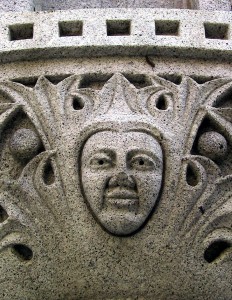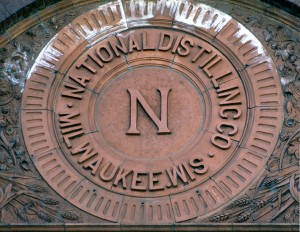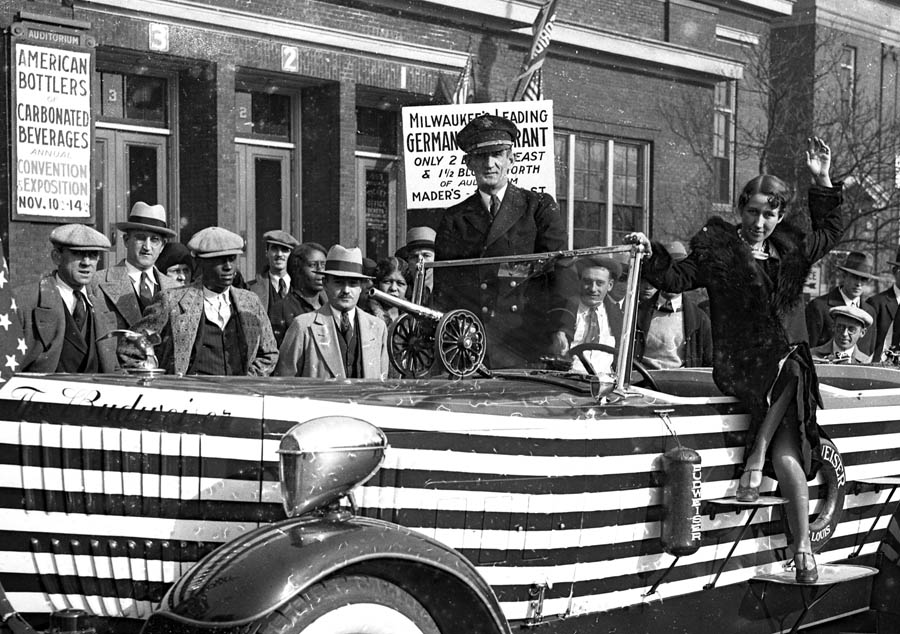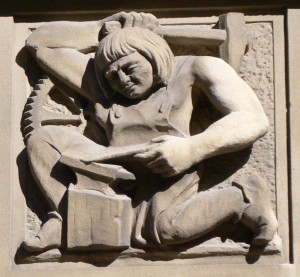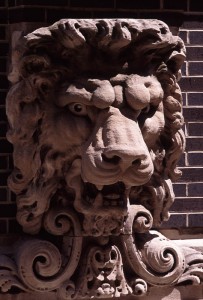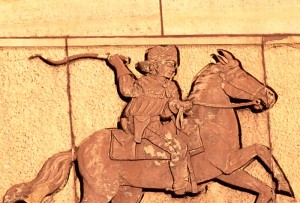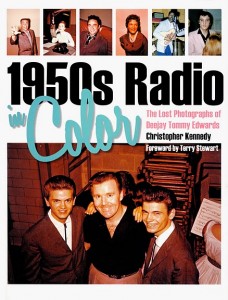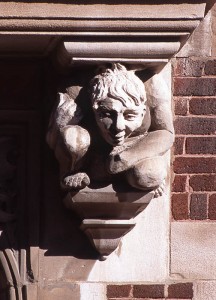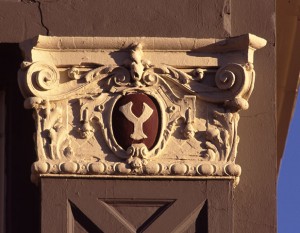Today’s mystery face is a happy little face hidden on the facade of an Eastown building. This is a towering building. Where might it be?
Mention of this character was made in a recent Odd Wisconsin article from the Wisconsin Historical Society website.
The story was one told by Dr. Jeremiah Selby in 1895 of his remembrance of a character that lived in early 1840s Milwaukee. Dr. Jeremiah Selby came to the developing village in 1842 and was one of the first school commissioners appointed in 1846 by Mayor Juneau’s council.
Milwaukee Sentinel
March 24, 1895Milwaukee Robinson Crusoe.
“A queer character lived on the west side of the Milwaukee river upon a tongue of land lying between the old Green Bay road (now Third street) and the river. His name was Carl Grotke. Those who knew him well called him ‘Old Grotke,’ and those who did not called him ‘the Hermit.’ He was not so very old (probably between 55 and 60) but his dress and general appearance made him look old. He seldom ventured away from his habitation and then he was seen in old dilapidated garments, generally with patched trousers and coat and shirt of dark flannel. He wore no hat, and his feet were encased in a pair of old leather slippers. It would appear from his looks that he never used soap and water or comb, and his hair was tangled and matted with a profusion of gray.
The tongue of land on which he lived was located in what was then known as Kilbourntown, about 300 feet south of Chestnut street bridge, on the border of what is now known as Prairie street, where it terminates on the bank of the river. Grotke’s home was not a house at all. He called it a steamboat when he gave it a name to those who out of curiosity visited him, although these visits were rare, because his abode was surrounded and secluded by a tall growth of elders which seemed to flourish there.
He seemed to have a certain repugnance to strangers (not that he was ugly or morose, for he was a mild and inoffensive man, but he had lived so long alone in a sort of Crusoe life that he had lost in a measure the use of language or the facility of expression).
No one seemed to know where he came from, although he was evidently a native of one of the German principalities. He spoke the English language as well as any, but with the diffidence of one who seldom had occasion to utter his thoughts or wishes. He had no personal friends or relatives among his countrymen here, although no one would have refused him assistence had he seemed in want, and although poor he always seemed supplied with the scanty means of living.
He called his home a steamboat. It looked something like one on a very small scale, standing in a vacant space among the willows and elders. It appeared like a boat about twenty feet long by five feet wide. Its keel was land some years before, and was now soggy and worm eaten. It rested on three or four blocks land along the ground. The deck of the boat was intended to be some two and a half or three inches above the keel, but it was never finished. From the ground you ascended a crazy ladder some four feet long and landed on a staging that surrounded the boat.
Grotke had evidently been reared near water, and like his forefathers had learned in his boyhood to fashion a boat, but he had subsequently wrought at cobbling. When the poor had wanted his services at mending their shoes he would patch them up and take for his pay any food they could share as remuneration. At odd times he would pick up a piece of fencing or a stray board and tack it on to his boat. His deck was unfinished but he had constructed a cabin near the stern, down which he passed by means of a short ladder to the bottom or ribs of the boat. Here he lived with a small rusty stove and pipe passing through the roof of the cabin he cooked his food. The boat was all patchwork, allowing the wind to whistle through its cracks, hot in summer and cold in winter, but he was never heard to complain.
His pet was the boat , which he expected some day to launch on the water. Although he called it a steamboat, his idea was not to use steam power, but to propel his boat from Milwaukee to Buffalo by the use of the element which surrounded him. Grotke had sort of a misty notion that by the power and use of the principle of perpetual motion he could raise water, and by the overshot process he could direct this force on the paddles, which would propel his boat and also aid him, by the use of a pump, to increase his supply of water for the overshot process and thus increase the speed of his boat. His means being limited, he was constrained to ask outside aid to finish his boat, and having profound belief in the ability of those in power, he petitioned the president of the United States and also the queen of England. To these letters he obtained no answers, but their context displayed his belief in their power and his veneration for their station.
Thus Grotke lived and hoped till in 1848 the La Crosse railroad was organized with its eastern terminal in Milwaukee. Having use for the land along the river they condemned it and took it for their depot, and as Grotke’s boat was on their land they ordered him off. The boat was then moved a few feet south and left in the middle of Prairie street, where he rested for awhile. The clearing of the street having been ordered, Grotke left his boat to the control of the city authorities and disappeared. Soon after the boat melted away, and was used by the scavengers of the city for firewood.”
This photo was taken at the convention of the American Bottlers of Carbonated Beverages (non-alcoholic of course!) in November of 1930 at the Auditorium. The Budweiser car/boat drew an admiring crowd on its tour through the United States. This was at the height of Prohibition so notice the grim attitudes of everyone in the scene!
A new book written and put together by Christopher Kennedy brings to light a series of photographs taken by Cleveland DJ Tommy Edwards during the late 50s and early 60s. Tommy Edwards hailed from Milwaukee and worked several years for WOKY prior to his new job at Cleveland’s WERE.
The archive of more than 1,700 photographic slides was discovered by the author 5 years ago and sheds light on the disc jockey’s work with a huge number of music and Hollywood celebrities as they passed through the midwestern city. It documents through 200 original photographs and press releases a view of what it was like working with these classic artists and how the industry was transformed during the birth of Rock ‘n Roll.
This is a great book for those interested in the cultural heritage of the music industry.
The book can be ordered through Kent State University Press:
1950s Radio in Color
I know this new feature was supposed to Mystery Faces but for this week, it will not be a mystery face but a myster-Y! This Capital “Y” is one of several letters on the pilaster capital of a lower east side building. This could be a difficult mystery so more clues will be forthcoming if nobody guesses in the meantime!
